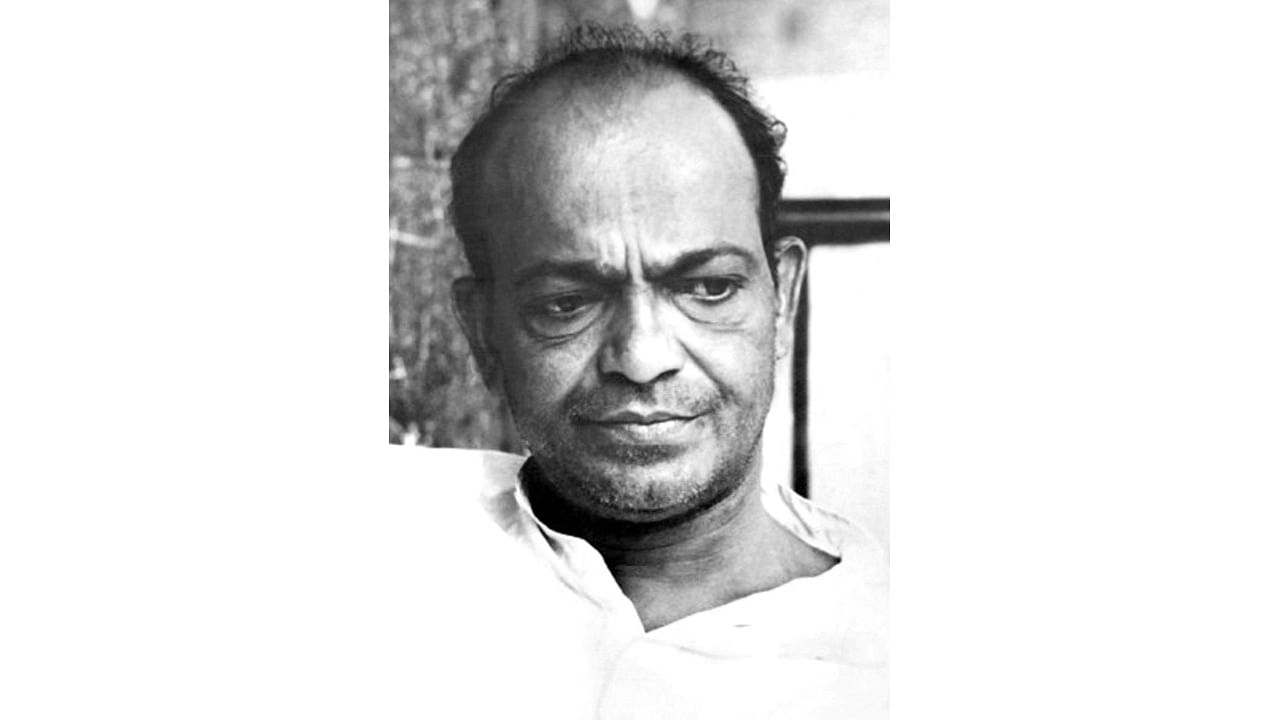

The state government is holding the centenary celebrations of Shantaveri Gopala Gowda, one of the tallest socialist leaders of Karnataka.
Born in the tiny village of Araga in Shivamogga, Gopala Gowda was drawn to freedom movement at an early age. He walked out of the SSLC preparatory exam hall to join the Quit India movement. Imprisoned, he read the writings of Nehru, Gandhi, and tried to understand the arguments in Marx’s Das Capital.
Later, a doctor introduced him to socialism through books like George Cready's Socialism in a Test Tube and Jayaprakash Narayan's Why Socialism?. A young rebel, Gopala Gowda was drawn to the Congress Socialist group formed by Jayaprakash Narayan, Ram Manohar Lohia and others.
After India's freedom, Gopala Gowda took part in the movement demanding a people’s representative government in Karnataka. When the Socialist Party became independent of the Congress in 1948, Gopala Gowda organised the party’s Kisan Sabha conference in Shivamogga and toured the state with socialist leaders. He later met his mentor Lohia in the Bihar Socialist meet.
Gopala Gowda became a full-time party activist, and a native socialist leader was born.
The Kagodu movement of 1951 pushed Gopala Gowda to the centre stage of the agitational politics. Oppressed by the landlords in the Sagar region, the tillers got organised under the leadership of Ganapathiyappa, a school teacher. The socialist Party backed the tillers and Gopala Gowda addressed their meetings. Even Lohia came to Kagodu, took part in the agitation, was arrested, and later released. The farmers were brutally assaulted and Gopala Gowda was imprisoned.
By the time Gopala Gowda was released, he had earned a huge following among the poor farmers of the region. Contesting on the Socialist party ticket from the Sagar-Hosnagar Constituency in 1952, he trounced Badrinarayan Iyengar, a Congress strongman and a landlord.
In an election where the voters voluntarily contributed a rupee or two for the election campaign, Gopala Gowda incurred an election expenditure of about Rs 5,000. He saved Rs 2,000 later from his allowance during the assembly session. Socialist writer C G K Reddy and others joined hands to clear off this debt.
The young socialist legislator took the legislative assembly by storm. A committed people’s leader, Gowda raised uncomfortable questions and took on the Chief Minister Kengal Hanumanthaiah and his ministers with his wit, biting sarcasm, anger, and uncompromising stance on issues. This was the time the socialist slogan ‘Land for the Tiller’ echoed in the assembly hall.
Gopala Gowda presented his party’s stand on land: ‘Land should not be a commodity for those who do not do agriculture.’
He stood for the unification of Karnataka and contributed to the evolution of native Socialism which Lohia was trying to shape at that stage. The Kannada intelligentsia looked up to him as an intellectual political leader.
In 1957, the 'feudal' elements got together and ensured his defeat. With no income, Gowda lived on the bare minimum, raising 10 to 50 rupees loan from friends for the party expense and his living. He was elected again in 1962 and 1967 and remained a legislator till the end.
By 1967, the Karnataka Assembly had six socialist legislators and the socialist party was growing strongly. Gopala Gowda continued with his tirade and kept the government on tenterhooks. Critiquing the inscription on the newly built Vidhana Soudha, Gopala Gowda said: ‘It is wrong to describe working for people as working for God’. When the governor, the Maharaja of Mysore, read out his address in English, Gopala Gowda tore the copy of his speech and trampled it. A hue and cry rose on ‘discrediting Goddess Saraswathi’.
Gowda prepared a reply which he could not submit as he was hospitalised: ‘I do not consider a piece of paper Saraswathi, nor would I accept that the foot is an inferior organ of the body.’ He chastised the government and took a dig at the ministers with his limericks. He used the Kannada language with such finesse that even the ruling party legislators would nod their heads.
Gopala Gowda spent quality time with Kannada writers like P Lankesh, Purnachandra Tejaswi, Chandrashekhara Patil, Ta Ra Subbarao, Ananthamurthy and musicians like P Kalingarao. In fact, the Kannada Navya (Modernist) movement acquired a Socialist dimension because of Gopala Gowda ’s proximity to Navya writers.
In the end, Gopala Gowda ’s dreams did come true, albeit after his death. Devaraj Urs, though a congress legislator, was an admirer of Gopala Gowda . When Urs became the chief minister, he implemented the land reforms act which provided land for thousands of tillers in Karnataka. The state was named Karnataka and the unification was achieved during Urs’ tenure.
Today, Gopala Gowda continues to be a role model for clean, pro-poor, secular politics in Karnataka, reminding people of one of John Shirley’s lines:
"Only the actions of the just
Smell sweet and blossom in their dust."